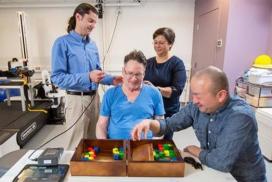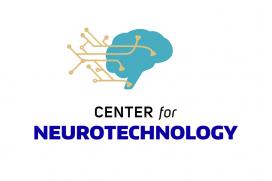Spinal Plasticity Testbed Advances from Animal Studies to Human Trials
A testbed to gauge the ability to engineer neuroplasticity within the spinal cord after injury is now being used in several human trials through research funded by the Center for Neurotechnology (CNT), based at the University of Washington and an NSF-funded Engineering Research Center (ERC).
One of the testbeds at CNT, the spinal plasticity system will enable advances in treating spinal cord injuries. Several human trials already use the testbed, which allows researchers to try new technologies, computational tools, and theories in engineering neural plasticity— a new form of rehabilitation that uses engineered devices to restore lost or injured connections in the brain, spinal cord, and other areas of the nervous system.
One trial is being conducted by CNT researchers and ONWARD Medical, a CNT industrial partner. The multi-site trial is testing non-invasive, electrical spinal-cord stimulation (ARC Therapy) and measuring its effectiveness in improving hand function after spinal cord injury. CNT-funded projects also provided key preliminary data for the trial, which is being conducted across 12 sites and its co-leader is CNT’s co-director.
Another research project uses the testbed to study the use of optogenetics to stimulate the spinal cord. CTN pioneered stimulation of the spinal cord using optogenetics, a method for controlling a neuron’s activity using light and genetic engineering. CNT researchers at the University of Washington and at Massachusetts Institute of Technology collaborate on the project, which continues with a $2.4 million federal grant.



